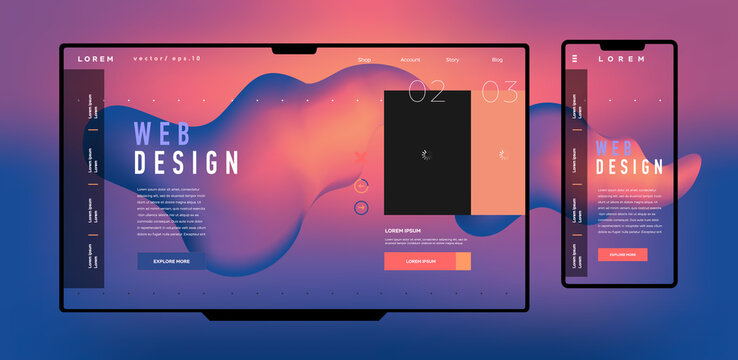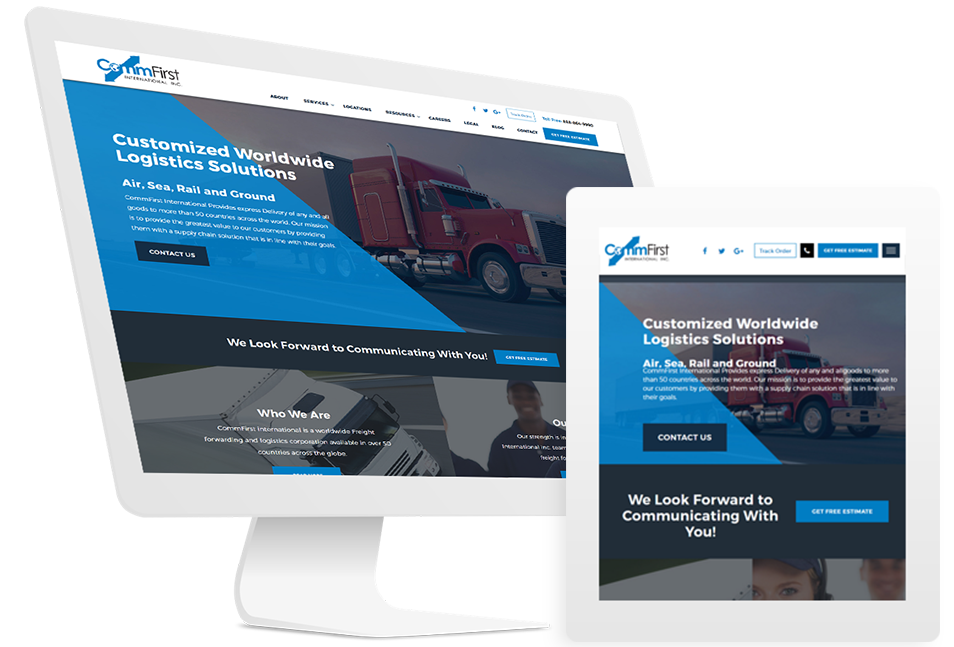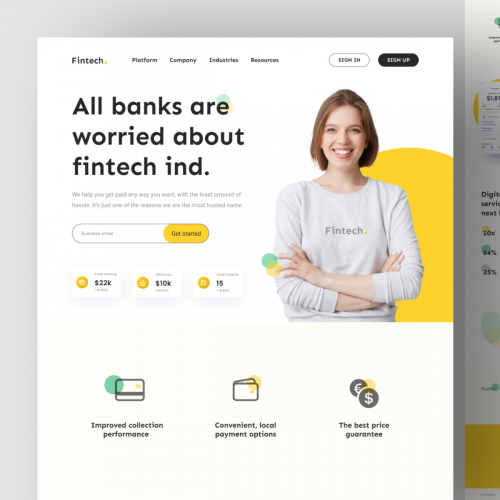Skilled Website Design for Businesses Looking to Increase Conversions
Skilled Website Design for Businesses Looking to Increase Conversions
Blog Article
Leading Tips for Developing an Impactful Site Layout That Converts
In today's digital landscape, the relevance of an impactful web site layout can not be overemphasized, particularly when it comes to converting site visitors right into clients. To achieve this, one need to take into consideration a variety of factors, including understanding the target market, focusing on customer experience, and enhancing for mobile systems. The strategic usage of engaging call-to-actions and a distinct aesthetic pecking order plays an essential duty in assisting individuals via their trip. As we discover these necessary elements, it becomes obvious that the success of your internet site rests on greater than just aesthetic appeal; it requires a thoughtful approach to design and functionality.

Understand Your Target Market
Recognizing your target market is essential to efficient site layout, as it lays the foundation for developing an interesting individual experience. Identifying that your customers are, including their demographics, choices, and actions, allows designers to tailor the website's material, layout, and performance to meet specific needs.
Conducting thorough market research study is important in this procedure. Studies, interviews, and analytics can give valuable insights into individual assumptions and pain points. By assembling this information, developers can develop user identities that represent different sections of the audience, ensuring that design choices are informed and pertinent.
In addition, comprehending the target market helps in selecting ideal design aspects such as color pattern, typography, and images that resonate with users. A web site that talks directly to its target market cultivates a sense of link and trust, motivating longer visits and higher conversion prices.
Ultimately, a user-centered technique to website layout not just boosts user satisfaction but also supports business objectives by driving engagement and loyalty. By prioritizing the needs and choices of the target audience, a site can efficiently serve its purpose and accomplish desired end results.
Prioritize Individual Experience
To improve the overall effectiveness of a website, prioritizing user experience (UX) is vital (Website Design). A properly designed UX makes certain that site visitors can browse the site effortlessly, locate information quickly, and involve with content meaningfully. This causes boosted user contentment and higher conversion prices
Begin by implementing user-friendly navigation. Menus must be rationally structured, enabling users to locate vital locations of the website with minimal initiative. Uniformity in style components, such as color schemes and typefaces, promotes familiarity, which is critical for maintaining customer engagement.
In addition, think about the filling speed of your web site. A delay of just a few seconds can lead to significant drop-offs, as customers are much less likely to wait for a slow-loading page. Simplifying pictures and enhancing code can enhance performance and keep site visitors.
By prioritizing customer experience, you not just develop an extra delightful atmosphere for site visitors yet likewise strengthen your brand name's credibility. Ultimately, a focus on UX is a financial investment in the long-lasting success of your website.
Optimize for Mobile Gadgets
Enhancing for smart phones is crucial in today's digital landscape, where an increasing variety of individuals gain access to web sites through smartphones and tablet computers. A mobile-friendly style not just improves individual experience yet also plays a significant duty in improving search engine positions. To accomplish this, it is necessary to embrace a responsive layout that automatically adapts to different display sizes and informative post positionings.

Filling speed is an additional critical variable; mobile customers are generally much less individual and expect fast access to information. Maximize pictures and utilize browser caching to boost performance. Finally, examination your my response website on multiple devices and display resolutions to identify and correct any prospective functionality concerns. By focusing on mobile optimization, you guarantee that your internet site continues to be affordable and effectively involves a broader audience.
Usage Compelling Call-to-Actions
A website's efficiency commonly pivots on its capability to direct site visitors towards desired actions, making engaging call-to-actions (CTAs) necessary parts of layout. CTAs work as the critical points that direct users to engage with the site, whether that indicates buying, registering for a newsletter, or downloading and install a source.
To develop effective CTAs, clarity is critical. Usage succinct language that clearly interacts the activity you want the individual to take. Phrases such as "Start," "Subscribe Free," or "Shop Now" not only convey seriousness however likewise remove obscurity. The positioning of CTAs is just as crucial; they should be purposefully placed throughout the website to ensure they are quickly noticeable, specifically in high-traffic locations.
Additionally, the style of CTAs ought to stick out without being interfering. Use contrasting shades and clear fonts to guarantee they catch attention. In addition, think about using directional hints, such as arrowheads or pictures, to assist individuals towards these switches. By focusing on these components, organizations can substantially improve customer engagement, driving conversions and eventually accomplishing their website's goals.
Concentrate On Visual Power Structure
Reliable website style counts heavily on a well-structured aesthetic pecking order that overviews customers via content flawlessly. By organizing components in a manner that prioritizes information, designers can important link improve customer experience and assist in decision-making. This includes making use of size, color, comparison, and spacing tactically to draw focus to one of the most crucial parts of a web page.
Making use of bigger typefaces for headings and subheadings establishes a clear distinction between different sections, permitting users to scan content easily. Additionally, employing contrasting colors for buttons and calls-to-action can capture user interest and urge communication. Whitespace is an additional crucial component; it stops mess and allows customers to concentrate on key messages without interruptions.
Images and graphics need to complement the text while additionally adhering to the well-known pecking order, strengthening the general message (Website Design). Consistency in style elements, such as shade plans and typography, further strengthens the visual power structure, making navigation intuitive

Verdict
In conclusion, reliable web site layout necessitates a comprehensive understanding of the target audience, prioritization of user experience, and mobile optimization. Inevitably, a well-executed site layout serves as a critical component in driving user activities and achieving business goals.
Report this page